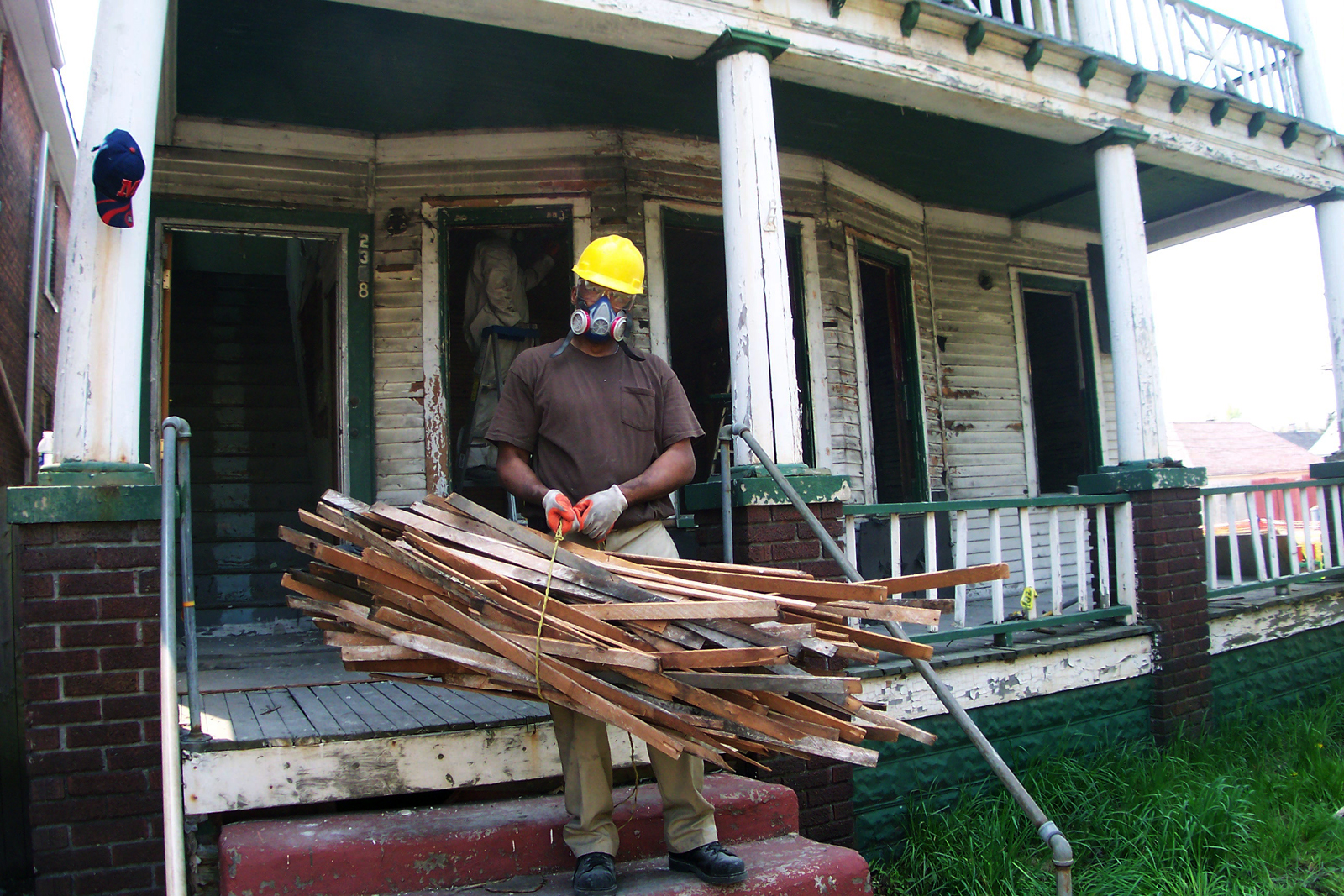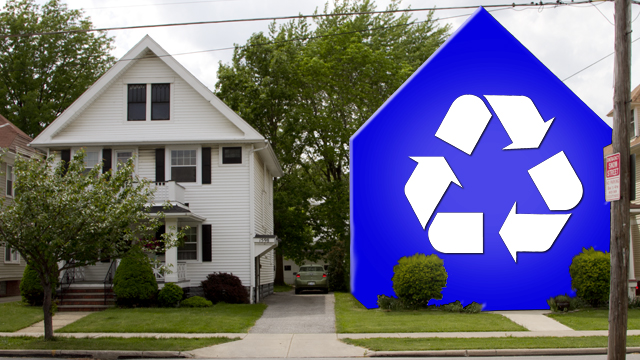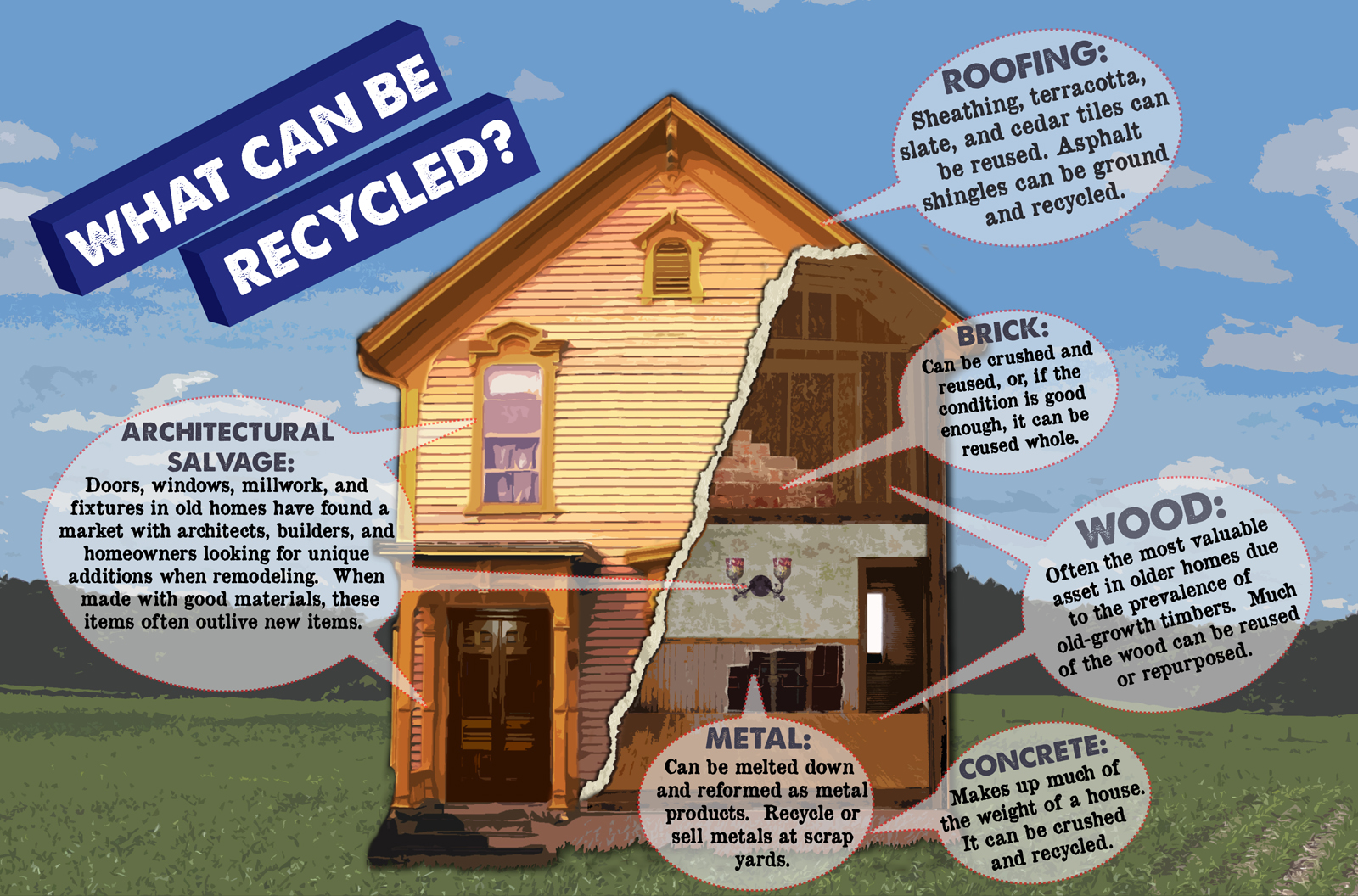When you think about recycling, you may picture newspapers stacked neatly on your curb for pickup, or those ubiquitous blue bins around your office filled with bottles and cans. But items like papers, plastics and glass represent only a fraction of what we could be recycling. Across America, landfills are still expanding rapidly. One of the major culprits is the debris from housing construction and demolition—much of which could actually be recycled.
“People understand it’s not right to just throw things away,” says Robert Chapman, Executive Director of WARM Training Center. “If you’re going to recycle a water bottle, how about recycling houses? It’s the same idea.” WARM Training Center is a Detroit-based nonprofit that trains building professionals and others in an effort to establish a local green-building workforce. In 2011, they founded Reclaim Detroit, a subsidiary nonprofit with a mission to divert construction and demolition material from landfills.

In Detroit, a city that epitomizes the slow and steady decline of the U.S. manufacturing industry, the residential vacancy rate hovers near 30% and neighborhoods have been hollowed out. “Detroit, in 1960, was a city of almost 2 million people. Right now, it’s estimated around 750,000,” says Chapman. Left jobless by shuttered manufacturers, people fled, leaving tens of thousands of vacant homes in their wake. In this context, demolition is often seen as a welcome alternative to blight. But, according to Chapman, demolition is not the only solution. “There are a lot of homes that were built in the 1910s, 20s and 30s—when Detroit was really booming—that were really solidly built. Instead of pushing a house down and throwing it into a big hole, if we can take it apart carefully and find ways to reuse that, we can give them new life.”


